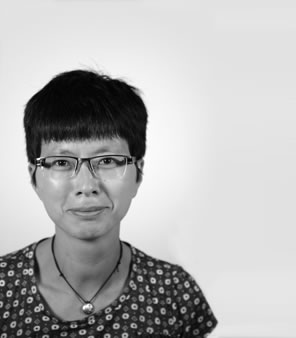编者按:为了介绍“设计研究”(Design Research)的学术动态,促进风景园林学设计理论的发展,“风景园林新青年”联合《风景园林》学刊对“设计研究”领域的国际知名专家学者进行了邮件 访谈,在访谈中针对“设计研究”的一些基本概念和问题,根据各位专家各自的学术特长进行了针对性的交流。希望通过这些访谈的成果,我们能够向读者介绍“设 计研究”的概念,并逐渐推动“设计研究”尤其是“通过设计的研究”(Research through Design)在风景园林学领域内的发展。
本文系“风景园林新青年”与《风景园林》杂志联合刊出

Dr. Rosan Chow
Rosan在加拿大阿尔伯塔大学获得艺术与设计学士以及设计学硕士。她在德国布伦瑞克艺术大学获得“设计科学”博士学位。她曾在香港、加拿大、美国和德国从事实践、教学和研究工作。从2007年起,她作为研究科学家在柏林设计研究实验室专门从事设计方法论,理论和论文研究。
一般来讲,如何用“通过设计做研究”的方法实施研究项目?
在我尝试回答之前应该澄清一个此问题中的重要概念。这个概念将“通过设计的研究”的特性考虑成一种方法论。在之前的一项研究中,我比较了多种不同形式的“通过设计的研究”并发现不同的作者从不同的视角构想“通过设计的研究”。“通过设计的研究”被看成一种工具、方法、策略或是研究的范式。有一点必须记住,“通过设计的研究”的推崇者们在发展各自的版本以达到各自不同的目标。这些目标从应对制度变迁,到成立研究项目,满足个人求知欲,向科学领域整合设计,或者追随风尚,各不相同。由于“通过设计的研究”存在不同的意义,为了清楚起见,必须说明所指为何。因此我们并不一定非把“通过设计的研究”设定为一种方法论。
然而,如果确实把“通过设计作研究”作为一种方法论,那么我可以说实施这种方法论大概有几种不同的方法。但是总体来讲(就像你问到的),设计的行动以及/或者成果应该成为通过其回答研究问题的方法。这里必须强调设计的行动和成果不是为了解决一个眼前的设计难题,而是为了增加知识和理解的积累。这里我想用一个同事Katharina Bredies的研究作为实例。 ( 参见 http://www.design-research-lab.org/relaunch/?projects=design-and-irritation-fabric-interaction-prototypes )
Katharina正在调查人机互动的新形式。她的研究问题指向未来和一些现在尚不存在的事物。这些新的形式并不存在、无法观察分析,而且需要进行创造。基于她研究起始阶段发展出来的概念,她设计和建造了四个不同类型的理论样机。这些样机不仅是设计目标,更是对她推演出的理论的应用。因此,通过这些产品原型,她可以检测她的理论是否可以成立。现在,人们可以争论说Katharina已经完成的工作无非是设计师长久以来一直在做的工作:设计师设想、建造并检测理论样机。这种说法也对也不对。
说它对,是因为这个过程确实非常像设计。说它不对,是因为从某种本质的方面讲,设计原型中应用的知识必须是全新于世的。让人们信服新的知识确实被创造了,必须将它置于以往已经取得的成果之中加以对比,因为新与旧总是相对的。这就意味着一名设计研究人员必须深入了解现有的知识并能够(用文字以及/或者通过物质材料)来阐释与旧有的知识相比她的知识新在何处。所以,据我理解,“通过设计做研究”作为研究方法论意味着进行设计,但是更具彻底性、更具强度、更具明晰性,最终能够形成新知识的积累。
Rosan holds a Bachelor in Art and Design and a Masters in Design from the University of Alberta, Canada. She has also obtained her Ph.D. in ‘Designwissenschaft’ from the University of Arts Braunschweig, Germany. She has practised, taught and researched design in Hong Kong, Canada, USA and Germany. Since 2007, she has been a research scientist at the Design Research Lab in Berlin specializing in design methodology, theory and discourse.
Question: Generally speaking, how to process a research project with the methodology of research through design (RTD)?
There is an important issue implied in the question that ought to be clarified before I attempt a response. The issue concerns the characterization of RTD as a methodology. In a previous study , I have compared various forms of RTD and found out that different authors conceive RTD from different perspectives. RTD is seen as an instrument, method, strategy or paradigm for research. It must be remembered that proponents of RTD develop their version of RTD to achieve specific goal. These goals can vary from dealing with institutional change, to establishing research programs, satisfying one’s intellectual curiosity, integrating design into a science-dominated field, and/or following the current trend. Since there are different meanings of RTD, for clarity, one should state what one means by it. So we do well not to assume RTD to be necessarily a methodology.
However, if I take RTD as a methodology, then I might suggest that there are probably different ways to go about doing it. But generally speaking (as you have asked), the act and/or the product of designing should be the method through which the research question is answered. It must be emphasized that the act and the product of designing is not to solve an immediate design problem but rather to increase our collective knowledge and understanding. Here I would like to use the research of my colleague Katharina Bredies as an example. (See http://www.design-research-lab.org/relaunch/?projects=design-and-irritation-fabric-interaction-prototypes)
Katharina is investigating new forms of interaction between people and artifacts. Her research question points toward the future and to something that does not yet exist. These new forms of interaction are not there to be observed and analyzed but rather are yet to be created. Based on ideas developed at the beginning of her research, she has designed and built four different categories of prototypes. These prototypes are not only designed objects but also embody the theories that she has developed. So with these prototypes, she can test whether her theories will hold. Now, one might argue what Katharina has done are what designers doing all the time: designers conceive, build and test prototypes. Yes and no.
Yes because the process is indeed very design-like. No because the knowledge embodied in the prototypes must be new to the world in some fundamental way. To convince people that one generates new knowledge, one must position it in what has gone before because new is always relative to the old. That means a design researcher must understand existing knowledge in depth and able to articulate (in words and/or through materials) the newness of her knowledge in relation to the old. So, as I understand it, RTD as methodology for research means to design, but with much more thoroughness, intensity and explicitness that eventually leads to collective new knowledge.